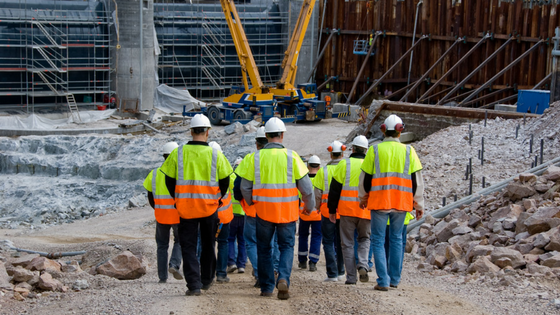Every year, the Occupational Safety and Health Administration (OSHA) holds a national “Stand-Down” event to prevent falls. This year’s event runs from May 7th to May 11th.
According to the OSHA website, the goal of this event is “to raise awareness among workers and employers about common fall hazards in construction, and how falls from ladders, scaffolds and roofs can be prevented.”
So how can your organization participate?
You can start by Downloading the free posters and information fliers that OSHA has put together for you. Post them in your workplace: break rooms, lunchrooms, common workplaces—anywhere that they’ll be seen.
You can also encourage safety meetings within your organization. Focus your weekly safety talks on fall hazards. Talk about the ways you can prevent falls at your workplace. Perform inspections on your safety equipment. Answer any questions your employees might have about fall protection.
The national Stand-Down event has been an annual occurrence since 2012. Federal agencies recognize the seriousness of fall hazards and want employers to do the same.
Falls are the leading cause of death in construction workers. In fact, there were 370 fatal falls recorded in 2016. And that’s just in the construction industry.
It makes sense then, that lack of proper fall protection, was the most frequently cited standard in 2017. Notice that this citation is for lack of proper fall protection. That has been an increasing problem both in general industry and construction.
Workers are usually equipped with some sort of fall protection system. But often, it’s the wrong system for that application. When it comes to personal fall arrest systems (PFAS), employees don’t always have the proper set up.
They might be wearing a harness. They probably have a lanyard attached to it. And they might even be connected to an anchor point. But does the harness fit properly? Is it buckled, strapped, and tightened everywhere it needs to be? What kind of condition is the harness in?
And what about the lanyard? Is that in good, working condition? Does a 6-foot shock absorbing lanyard work best for the situation, or should a self-retracting lifeline be used instead?
These are all questions that workers need to be asking themselves.
When it comes to anchor points, workers don’t always understand if what they’re using is safe. You’ll often see them connected to things like piping, ductwork, or handrails. These are not suitable anchor points.
The truth is, most workplace falls are preventable.
OSHA’s fall prevention campaign helps organizations work towards zero falls and zero deaths. During this week’s event, they want employers to focus on three things:
- PLAN to get the job done safely
- PROVIDE the right equipment
- TRAIN everyone to use the equipment safely
Planning will reduce the chances of an employee experiencing a fall
For the construction industry, planning needs to take place early on in the project. Companies need to factor in any costs associated with fall protection when bidding on jobs and projects. That way, there is no excuse for not being able to afford the necessary equipment.
Providing the right equipment is essential
Employers are responsible for providing fall protection equipment to their employees. Protecting your workers should be the number one priority for your organization. One way you can do that is by getting them the tools and equipment that will keep them safe.
Train everyone to use the equipment safely so that they don’t get hurt
Now that you’ve provided the equipment, you must train your workers how to use it. Remember, lack of proper fall protection is the number one citation. Even if they have the right equipment, it could be considered improper use if your employees don’t use it safely or correctly.
Think about how you can involve your workplace in this year’s Stand-Down event. The discussions you have with your employees today, just might save some lives.
